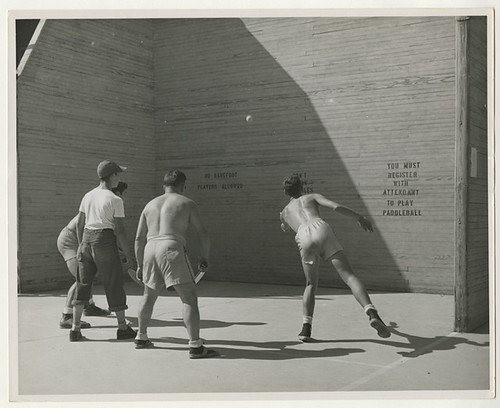 |
| There is no exaggeration to this image.(Via Wikimedia Commons) |
I find it ironic that during my Retro Ska Librarian Lifestyle (aka Sedentary, Binge Eating Unhealthy Diet Life of Dan), this never happened. But a few years into Streamlined, Leafy Green, Daily Workout Ska Librarian Life of Dan .... hot poker glass shard demons jam into my bunion joint.
I'm hoping this was a one time event and not a chronic condition. And forcing myself to spend several days immobile with my foot up has once again made me realize how much I really need and want to move on a daily basis.
(What's also fascinating is finding out how many of my friends are gout sufferers. Who knew this persnickety affliction affected so many? I guess I know a better class of people than I thought!)
I tried to avoid too many fitness and nutrition websites during my recovery, lest I get too antsy, but I did start falling back to the Nutrition Blog Network, figuring my RD "colleagues of another terminal degree" might give me some interesting recipe ideas. And from that website, I came across this recent post from Dietitian Without Borders on "How to Walk 10,000 Steps a Day".
And here I can only walk zero! *sob*
But it did give me an idea for a blog post. All those steps...
I see a lot of friends and colleagues with the FitBit bracelet nowadays. Interestingly enough, many of these were gifts to these people from loved ones. Nothing like passive-aggressively telling someone to move more...
Don't get me wrong. I think it's great if you want to keep track of moving. And, as that aforementioned link shows, it's something we should probably all be doing in simple easy ways. I see it in the same vein as calorie-tracking, which I'm sure will get me in trouble, as that seems no longer a supportable choice for weight loss and maintenance.
But I look at it as a template. I can see calorie levels and get a better understanding of portion control, even if not I'm not following calorie counting to the exact digit. And knowing that 10,000 steps is equivalent to 5 miles, well that can give you a better sense of how much you should really be moving. And when these FitBit and similar apps show you how much you actually move ... I'm sure it's an eye opener.
But many of my NYC pals using these apps (gouty or no) find it funny that they tend to go way past the limit of steps per day pretty early on each morning. That's because we live in a city where walking is just something you do, even during motorized commutes:
 |
| It really hasn't changed all that much via NYPL Digital Gallery |
We are a walkable city. It's been measured. Evidently, and not surprisingly, my NYC neighborhood has a walkability score of 100. Of, course, you can look at it from the other side: 3 or out 4 gas stations in the neighborhood closed in the past few years and there's no parking without a huge cost. And not that walkability always signifies a good thing to urban planners. You can look at the research that shows financial status can play a much bigger role in walkability as opposed to all other markers. (i.e. If you can't afford to drive, you won't). This report that shows a correlation between high walkability and higher crime rates.
But that's not taking into account a place like NYC. We just move more.We sort of have to.
So, lot's of walking, better diet ... was I a candidate for this dreaded "disease of kings?" Could I have done everything to prevent this issue? Slept more and eat even better? This study showed that while those people who slept less tended to eat for a longer period throughout the day, they did not intake more calories than those who slept longer. That doesn't quite take into account those of us binge eaters. Longer hours awake may mean more opportunities to binge. And this one showed that a low glycemic diet (in a controlled test) did show a lowering of weight, but did not really decrease inflammation, as it was thought it might. Although I'm pretty much already in the low GI fruit eating group anyway.
No, it may have just been fate that did me in.It was also pointed out that stress could have been a factor. So even with extra walking and good eating, I'm not sure I could have escaped this pain.
If it does come back (and man, I certainly do hope it does NOT), I just need to be more aware of the situations and how it might be better controlled. And I think that means being more aware, but also getting back to taking of advantage of this oh so walkable, moveable city of mine. It may not have made me the healthiest young adult, but it always has the potential to get you moving more:
 |
| Believe it or not, I even played this when I was a Retro fella. Via The Center for Jewish History on Flickr |
References:
Carr, Lucas J., Shira I. Dunsiger, and Bess H. Marcus. “Walk ScoreTM As a Global Estimate of Neighborhood Walkability.” American Journal of Preventive Medicine 39, no. 5 (November 2010): 460–63. doi:10.1016/j.amepre.2010.07.007.
“How to Walk 10000 Steps a Day.” Dietitian without Borders. Accessed August 4, 2014. http://dietitianwithoutborders.com/walk-10000-steps-a-day/.
Juanola-Falgarona, Martí, Jordi Salas-Salvadó, Núria Ibarrola-Jurado, Antoni Rabassa-Soler, Andrés Díaz-López, Marta Guasch-Ferré, Pablo Hernández-Alonso, Rafael Balanza, and Mònica Bulló. “Effect of the Glycemic Index of the Diet on Weight Loss, Modulation of Satiety, Inflammation, and Other Metabolic Risk Factors: A Randomized Controlled Trial.” The American Journal of Clinical Nutrition 100, no. 1 (July 1, 2014): 27–35. doi:10.3945/ajcn.113.081216.
Kant, Ashima K., and Barry I. Graubard. “Association of Self-Reported Sleep Duration with Eating Behaviors of American Adults: NHANES 2005–2010.” The American Journal of Clinical Nutrition, September 1, 2014, ajcn.085191. doi:10.3945/ajcn.114.085191.
Manaugh, Kevin, and Ahmed El-Geneidy. “Validating Walkability Indices: How Do Different Households Respond to the Walkability of Their Neighborhood?” Transportation Research Part D: Transport and Environment 16, no. 4 (June 2011): 309–15. doi:10.1016/j.trd.2011.01.009.
No comments:
Post a Comment